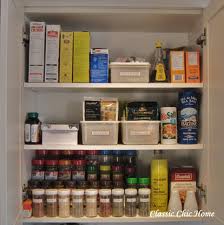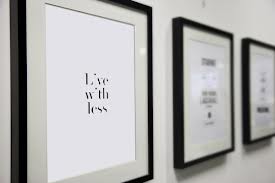One of the main ways we become overwhelmed with disorganization is by accumulating more ‘stuff’ than our spaces can accomodate. Over time, even the most conscious consumer can find themselves in excess if they do not take steps to regulate the inflow and outflow of things. In order to assist our readers in managing their personal collections we’ve put together a few rules for regulating the amount of ‘stuff’ in our lives.
1) Know What You Have: If you are planning a shopping trip to the grocery store or the mall, before you leave, take an inventory of what you have and what you need. This will help you to avoid buying duplicates.
 2) No Spend Commitments: Often times, homes will have packed pantries and freezers and still continue to bring in more food each week. Committing to one week of eating only the items in your home will help you eat down the current stock and save you money. This process is great for using food items that may be expiring in the coming months.
2) No Spend Commitments: Often times, homes will have packed pantries and freezers and still continue to bring in more food each week. Committing to one week of eating only the items in your home will help you eat down the current stock and save you money. This process is great for using food items that may be expiring in the coming months.
3) Borrow & Share: If you just need the use of something once or twice, consider borrowing the item from a friend or family member instead of purchasing it. This trick works great for specialty cookware (i.e. pasta maker), tools, special occasion clothing, and sports equipment.
4) Don’t Be Afraid to Return: One common issue we see in homes with disorganization problems is that they have a lot of never-used items that are in someway wrong. Instead of keeping those items indefinitely, make an effort to return them asap. To help you do this, immediately place the return item in your car with the receipt once you decide it is not needed.
5) One in, One Out: The one in, one out strategy is fantastic for maintaining the right amount of things for your space. The way it works is before you bring something new into your home, you must first let go of something else. By employing this method you’ll be encouraged to eliminate the things you don’t need and also monitor the incoming items.
6) Scheduled Purging: It’s easy to get distracted and push organizing projects to the bottom of our to-do lists, but if you commit to a regular purge you’ll begin to develop a more clutter-free existence. We recommend setting aside a Saturday once per quarter to complete a full-home round up of all un-used, broken, and unnecessary items.
Good Luck!
TWOW


